Two models lead the way to Santa Fe
By John Gilbert
PARK CITY, UTAH — Maybe it’s simply a translation issue, from South Korea to the United States, but the Santa Fe has never been introduced in Santa Fe, New Mexico. Hyundai also has a compact SUV named Tucson, which has never been introduced in Arizona. Go figure.
Nobody, however, is pleading for geographic logic in opposition to the site of Park City, Utah, where the 2013 Santa Fe Sport was introduced, complete with side trips to Sundance and the Olympic Park training facility.
In setting the stage for the increased luxury of the vehicle, we were dropped off 45 minutes west of Salt Lake City at the luxurious Montage Resort, nestled up in the trees at 8,347 feet of mountain altitude. It was the perfect place to show off the ability of the 2013 Santa Fe Sport’s turbocharged 2.0-liter engine, which easily coped with such a high-altitude drain on power.
The decidedly upscale revision to the Santa Fe has a flashy, bright chrome grille serving notice that its third generation intends to show its maturity by stepping above and beyond the subtle but efficient current model to become two vehicles in one.
The 2.0-turbo scored well in all maneuvers sending the Santa Fe Sport across some twisting mountain roads, and some rougher gravel back roads, although we didn’t do any off-roading that would qualify as being worse than a rural Northern Minnesota driveway. We only got the chance to drive the Santa Fe Sport with its 2.0-turbocharged 4-cylinder engine, while still to come is the same vehicle with the 2.4 GDI (gas direct-injection), both of those with compact 184.6-inch length. In a curious bit of name-calling, the actual vehicle called Santa Fe will stretch into an elongated 193.1-inch, three-row-seat version with a 3.3-liter V6, as it becomes a vehicle for all reasons. The new Santa Fe is not only a luxurious, upscale replacement of the current Santa Fe as the Sport, but it also grows to longer form to replace the larger Veracruz — an impressive top-end model, which will disappear in favor of the Santa Fe’s expanded intentions.
All Santa Fe models come with front-wheel drive or all-wheel drive, which is reflected in their price structure. The Santa Fe Sport 2.4 has a base price of $24,450 (FWD) and $26,200 (AWD); the Sport 2.0-Turbo runs from $27,700 (FWD) to $29,450 (AWD). Pricing on the elongated model will follow its introduction. Read more
Ram loads upscale features under familiar look
By John Gilbert
It takes a great truck to be competitive among full-size pickup trucks, and whether you examine trucks anywhere from Ford, Chevrolet, Ram, Toyota, to GMC, every one is impressive in capability. It takes something extra to break through that brand loyalty and lure a truck buyer to switch allegiances.
Dodge apparently had that in mind when it revised the 2013 Ram — which is no longer a “Dodge Ram” but simply a “Ram” nowadays. If it’s going to take special features and conveniences to attract truck buyers, the new Ram is loaded, from its kneeling stance for easy entry and exit via its adjustable ride-height 4-wheel air-suspension, to its high-tech V6 complement to the cylinder-deactivating Hemi V8, both operating through a very slick rotary-knob-controlled 8-speed transmission, to its inner comfort and connectivity.
Aiming at class-leading hauling, towing and fuel economy, the Ram is also out bolster its forceful reputation by setting new standards for interior comfort and futuristic Uconnect connectivity — places where the competitors might have previously had an edge.
From the outside, the Ram doesn’t look all that different from the current 2012 model. But look closely and you see that the big, bold crosshairs grille is now bigger and bolder, growing 30 millimeters taller, above a new lower fascia. The top-of-the-line Laramie Longhorn has what Dodge calls a “heroic” bumper that is one-piece, real steel.
Appearance-wise, the Ram offers various looks, with grilles that range from black, to body-color, to silver, and on up to the Laramie Longhorn, which has a very busy silver mesh behind the crosshairs, and which seem to me to be too fancy for a work truck, no matter how plush and feature-filled the interior might be. The mesh looks like an escapee from Range Rover might have designed the look. However, part of the Ram’s improved aerodynamics — a 0.36 coefficient of drag — is that slats close off the grille when cooling is sufficient to not need extra air, which further reduces the aero drag.
Speaking of real steel, the Ram, which came out in its current form in 2009, has an entirely new frame made with an increased amount of high-strength steel, which can be made thinner and still stronger to improve stiffness and reduce weight. The truck body, bumpers and cross-members are also stronger and lighter.
Under the hood, the 5.7-liter Hemi returns, but its less-potent 3.7-liter V6 partner has been replaced by Chrysler’s new 3.6-liter Pentastar V6. The engine, which actually replaced seven V6 engines ranging from good to mediocre, is the true star of everything Chrysler, Dodge, and Jeep put on the street these days, and its move into the Ram pickup is more than just impressive. It, alone, might be a deal-breaker for truck-buyers who don’t need the extra heft of a V8.
The 3.6 Pentastar, with its dual overhead camshafts and variable valve-timing, is built at a 60-degree-angle V, of high-strength diecast aluminum, with cast iron bore liners for the cast aluminum pistons. Six-bolt main-bearing caps and forged connecting rods assure strength, which is good, because the 3.6 churns out so much more power that for the first time, the Ram V6 is available with 4-wheel drive and even the humungous crew cab. It has 305 horsepower at 6,400 RPMs, and 269 foot-pounds of torque, peaking at 4,175 but maintaining 90 percent of full torque from 1,800 to 6,400 RPMs. The V6 has a high compression ratio of 10.2-1, but it will still burn regular fuel.
The 3.6’s 305 horsepower represents an improvement of 45 (8 percent) over the 3.7 — which will continue in the base Tradesman models — and the 269 foot-pounds are a 14-percent increase in torque. While Rams used to only use V6es in 4X2 trucks, the new 3.6 V6 has fuel economy figures of 17 city and 25 highway, and still accelerates 0-60 in 7.5 seconds, and hauls trailers up to 6,500 pounds.
For heavy-duty work, the 5.7 Hemi has variable valve-timing and cylinder shutoff, which idles four of the eight cylinders when cruising between 1,000-3,000 RPMs. It also can be selected with stop-start, which shuts off the engine during stops at lights or during work duties, and restarts smoothly and effortlessly when the driver steps off the brake. That requires a high-endurance starter and a DC-DC converter to keep the accessories going during stoppages, and a heavy-duty battery.
A vital part of the new Ram’s success is the new 8-speed automatic transmission, which made its debut in the Chrysler 300 and the Dodge Charger automobiles, and moves with very little modification into the Ram. It will replace the 4-speed automatic in the current V6, and will be moving up to the V8, where it will join the very good and quite-new 6-speed, and improve the Hemi’s fuel economy by an anticipated 10 percent.
The new 8-speed was designed by Germany’s ZF — pronounced “Zed-F” — and is now built by Chrysler under its own licensing in Kokomo, Ind. Having eight speeds means an expanded range of ratios, from 4.74 in first gear to 0.67 in eighth, where anything under 1.00 is overdrive. The wider ratios are an obvious advantage to both acceleration and high-speed cruising, and having more steps between the eight gears lessens the force of each shift for an improvement in shift quality. The inner sophistication of the transmission is best described by the fact it has over 40 shift maps, each of which are determined by computer, which reads engine speed, torque, and other driving demands, then selects the best ratio.
Shifting the transmission is done by a very Jaguar-like rotating switch. In every Jaguar, a small puck-like cylinder rises from the console, and you engage a gear, or park, by turning the thing. ln the Ram, the same sort of puck is located fixed on the center stack, in easy reach of the driver, and I found it more intuitive than the console switch on the Jag.
That’s a small part of the interior refinements in the Ram, which has redesigned cupholders, upgraded interior fabrics, with all media ports in the console’s center stack area. The Longhorn has real wood trim, of some sort of European open-pore wood, but the same guy who overdid the grille also might have been responsible for adding glare-attracting bright silver trim to the center-stack surround.
An optional display screen offers a full-color 7-inch view when you back up, and it allows viewing of trailer hookups while also including all pertinent trailer data.
The 3.6 V6 Ram is 130 pounds lighter than its predecessor, and the Pentastar V6 and the new 8-speed transmission account for 76 of those pounds. The 8-speed with the Hemi V8 is 30 pounds lighter than the 2012 Hemi with the 6-speed. Electric power steering operates the mechanical rack-and-pinion steering, and eliminates the need for a power-steering pump.
Price structure starts with the Tradesman 4X2 at $23,585; SLT models range from $28,345-$36,835; Sport goes from $33,030-$42,500; and the Laramie from $38,710-$48,515. Options, of course, including the air suspension, can boost all those prices. Production of the 2013 Ram started in August, and it will come out for the last quarter of 2012, a year when the Ram already is 23 percent ahead of 2011, year-to-date.
When the current Ram came out in 2009 was the addition of Ramboxes, the cleverly designed narrow little storage bins located in both sides of the bed walls, with hinged covers running along the top edge. It has been a popular feature, and it is enhanced on the new truck by being lockable at one touch, along with the tailgate, whenever the driver hits the key fob to lock the doors.
One of the 2013’s big features is the addition of air suspension, which allows adjustable ride height, something that is common among off-roading SUVs, but is unprecedented in pickups, which spend a lot of their working lives clumping over boulders and uneven land on ranches, farms, and on hunting expeditions.
The Ram can be adjusted to four heights, starting with an off-road setting that raises clearance by 2 inches; a lesser off-road setting increases ride height by a half-inch. The normal setting is for normal highway driving. Then there is the entry-exit setting, which causes the Ram to drop down 2 inches in ride height for easier climbing in or hopping out. A fifth mode that can’t be set is for aerodynamics, automatically lowering the Ram at 60 miles per hour to reduce aerodynamic drag.
As a final touch to show how far truck folks have come in recent years, the “next generation” Uconnect Access makes its debut, turning the Ram 1500 into a Wi-Fi hotspot. Voice-recognition can be activated, or coordinating with steering wheel controls, touchscreens and traditional controls, all of which offer occupants a variety of ways to access and operate the numerous gizmos. Access allows alternative ways to summon up and use all the various applications, including using the web, in case the optional 8.4-inch touchscreen seems inadequate.
Acura TSX perfect alternative to Accord
By John Gilbert
If you were a loyal Honda Accord buyer, and you knew a new-generation Accord was coming out in September of 2012, would you consider an Accord-like vehicle from Honda that meets or exceeds every feature you always wished the Accord possessed, for about the same money?
If you would you pay $32,000 for the much-anticipated 2013 Accord, would you pay $30,000 to move upscale to the Acura brand for a TSX Special Edition? The current Accord grew too large and hefty, and while the new one might be a little sleeker, a little sportier, with a bit more punch, but with the same good fuel economy, and yet the TSX might be the perfect alternative car.
But, as they say in the car biz, you might not want to wait.
The current 2012 Acura TSX Special Edition is almost a secret, and it definitely is a secret bargain, which combines sporty performance and handling Accord buyers can only dream of, with enough roominess to take care of the Accord’s workaday requirements. And, it might not be around very long, even though its technology and sportiness will never go away.
Honda is usually the best auto manufacturer at keeping secrets, but the summer of 2012 has been filled with spy photos, news leaks and rumors about the new Accord. We’ve been treated to advance reports that the new Accord will be a little smaller than the large current model, which spilled over the boundary from midsize to full-size. We’ve also been teased that the new Accord will have a new generation of engine technology, something to springboard it forward toward the engineering standard we had grown used to expecting from Honda.
Meanwhile, there are all sorts of rumors that Honda’s upscale Acura line, which just added an entry-level ILX to its stable, is planning to phase out the TSX because it’s similar in size and bumps up against both the larger TL and the new ILX. That would leave Acura with the RL luxury line, a TL that could get slightly reduced in size to swallow up the sportier TSX, and the ILX — along with its SUV tandem, the MDX and just-introduced new-generation RDX.
If those rumors are true, the enthusiasts among Acura shoppers will be sorry to see the TSX leave the scene. The Acura line always has had its luxury cars, such as the original Legend, which grew up to become the RL, and it always has had an upscale sporty representative, too. There was the original Integra, which came in sleek 4-door hatchback or 2-door coupe form. I owned one for several years, and it was so thoroughly enjoyable and trouble-free that my older son, Jack, wound up with one too. Years later, he wishes he still had it.
Acura also had the incomparable 2-seat mid-engine sports car, the NSX. Whenever anybody asks me that of all the cars I’ve driven over 40 years of automotive testing, which single car would I most want to own, my answer steadfastly remains: the Acura NSX.
It was from that heritage that Acura also spun off twin models — the RSX 2-door coupe and the TSX, which was a 4-door sedan model, that was pretty much the RSX stretched to house a family, with the same sporty engine, transmission and suspension. As years went by, Honda, remaining separate from Acura, decided to hike the performance level of the Civic Si by giving it the RDX (and TSX) engine, with its dual overhead camshafts instead of the dependable single-cam version of the Civic, and to add firmness and handling to the suspension. It even bolstered the Civic Si with traction control, something the RSX lacked.
In the process, the RSX remained an automotive bargain, but it became difficult to justify charging more for it when the less-expensive and sporty Civic Si, with traction control, was available. So Honda eliminated the RSX, a move that, in a way, might be a predictor for the fate of the future TSX, if rumors hold.
To give the TSX room to grow, Honda added some luxury touches, and a year ago offered an optional V6 along with its high-output 4, separating it a bit from the Civic Si sedan. The 4-cylinder version still seems like all the engine any TSX buyer could want or need, especially when the TSX was able to use the 2.4-liter 4, with its dual-overhead camshafts for higher revving and more horsepower.
For 2012, the Civic Si is offered with a “new” engine, which isn’t new at all except for Civic use. It is the same potent 2.4-liter 4-cylinder that has been a strong and familiar powerplant to Honda and Acura buyers for nearly 20 years — and which currently can be found in the RDX crossover SUV, and the TSX sedan.
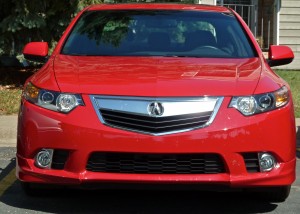
Where its larger siblings, the RL and TL, have undergone curious styling revisions, the TSX is now the most tastefully styled of the brand.
All of which brings us around to a bright red 2012 Acura TSX Special Edition, which, after a week-long road test, has become my favorite vehicle in the entire Acura line. It has none of the heft of the RL — or the current Accord, by the way — and it is unburdened by the over-reaching styling wanderings that took the TL from being the most beautiful car in Honda’s entire universe into some weird, buck-toothed wilderness, complete with chrome-splashed obnoxiousness. The TSX also has more of a sculptured sportiness and some of the luxury leanings of the new ILX.
The Special Edition is more than just the latest TSX. It is, as the name says, special.
The test car shows that Acura designers could, after all, restrain themselves from fastening that big, wide swath of chrome as a beak on all its models. That’s the drawback of a so-called “signature” feature; if it has universal appeal, great, but if it doesn’t, well, the TL’s appeal can disappear, and everybody gets the overdone overbite. The TSX has that widened upper lip on the grille, but it is less intrusive than the other Acuras, presumably because somebody at the home office tackled the radical designer before he could do similar damage.
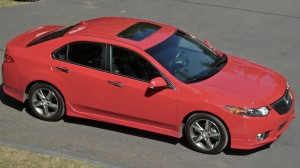
The Special Edition TSX 2.4-liter 4 has 201 horsepower to be guided by a 6-speed manual transmission.
While styling is subjective, I like the subtle contours of the TSX, but its best feature is what’s inside and under the skin.
The 2.4-liter 4-cylinder engine, with 16 valves and dual overhead cams, with i-VTEC variable valve timing control — which set Honda apart from less-high-tech rivals back in 1990 — and with a smooth-as-silk 6-speed manual transmission, brings the TSX fully to life as a sports sedan of the highest order.
We will find out by September of 2012 if all the new Accord rumors are true, but the most prominent one remains the addition of a new engine — a 2.4 with DOHC refined with direct injection, which should help fuel efficiency and performance, and supposedly will deliver 181 horsepower. The new Accord also is supposed to get a CVT, continuously variable transmission.
Yes, direct injection would be great on the 2.4, but until then, the TSX has the same engine without direct injection, but it has been refined to put out 201 horsepower. Hmmm…less refinement and more horsepower?.
The test TSX had a sticker price of $32,310, which includes Special Edition features such as a full underbody sound and aero kit, exclusive Special Edition seats, exclusive Special Edition lighting, with badges to show that it’s the Special Edition, and aluminum pedal plates. The intriguing thing is that after adding up the included upgrades, which total $2,500 if you could buy them, the car instead gets a Special Edition discount of $1,500, which drops the price to $30,810.
A standard delivery charge of $885 afflicts both sticker prices, and while it zips the total price over $33,000, it pushes the Special Edition price only up to $31,695 — still less than the standard TSX without the upgrades. That, is a bargain.
Hyundai has generated a revolution of sorts by adding such details as direct injection to the dual overhead cams of its 2.4-liter 4-cylinder, reaching 200 horsepower. The new Accord coming out supposedly will have 181 horsepower. The TSX Special Edition’s 2.4 hits 201 horsepower, and that’s without direct injection.
The TSX handles with firm efficiency, too, and from the driver’s seat, everything falls into place. That includes the shift lever, which zips through the six gears with optimal smoothness, adding fun and sportiness to the 30-miles-per-gallon efficiency. As automatic and dual-clutch transmissions become more and more sophisticated, there are fewer and fewer stick shift models available. The TSX proves there is still a place for them, for those companies, and consumers, who still prefer the basic manual shifting. Especially this sort of manual shifting.
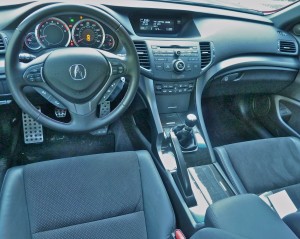
Controls are sporty and ergonomically sound, with non-glare black from its soft-toiuch dash down to the console.
I’m not sure all the buttons and controls on the center stack are necessary, and my iPhone was difficult to code into the hands-free system, but the center stack and console are refreshingly simple, even austere, because everything is a matte black, from the soft-touch texture of the dashboard to the button-filled center stack and on down to the console. Speedometer, tachometer and other instruments are simple and straightforward, and nowhere is there the bright, glare-catching accents of glossy silver trim that are so common on new cars, where a dash of flash seems more prominent than glare-free ergonomics..
In short, it’s the type of interior command post that gave Honda the reputation it richly deserved for ergonomic excellence. The same sort of ergonomic excellence BMW used to be able to boast about before iDrive, and now only seems to appear in base models.
My wife, Joan, who has become an expert at the benefits of coordinated energy for physical work with humans, was greatly taken by the TSX’s attributes. “I like the aero quality of the design, which makes the overall look pleasing,” said Joan. “The inner design is subtle and classy, and not flashy. The design inside and out made the car feel comfortable to look at, and it has all the energy of the old Hondas.”
I never thought of those particular attributes, but I couldn’t agree more. Maybe the new Accord, with its newly redone 2.4, will be as sporty, and it will offer a 6-speed stick shift along with its CVT automatic. But the Acura TSX is here, now, and it offers all of the attributes that established Honda as a high-tech leader and benchmark of inexpensive sporty sedans. If it is going to go away, the TSX Special Edition might be one to capture and hang on to.
Porsche 911 Carrera shines, top or not
By John Gilbert
As twins go, sometimes not being identical is preferable. That’s certainly the case of the Porsche 911 Carrera, where the Summer of 2012 brought a pair of Porsches virtually back to back for test drives. One was a sleek, dark green Carrera S Coupe, and the other was a sleek, dark blue Carrera Cabriolet convertible.
That’s not to say I would have turned down a second chance in an identical Coupe, but the opportunity to take pretty much the same car and drop the top was the perfect complement in Minnesota’s heat wave.
Both test cars had Porsche’s superb 3.8-liter flat-opposed 6-cylinder engine, rear mounted and attached to a rear-drive arrangement. So when you pop the trunk, both can elicit more than just the usual rubber-necking gaze, because the trunk is in the front, and passers-by always seem puzzled that there is only a quite-deep well under the front hood, with no engine up there.
Visually, the newest generation of 911 doesn’t look completely different, as 30 years hasn’t required major alteration from the original design. But if the visual impact of a Porsche 911 has remained true, so has the audible sensation, which is at least as recognizable. Turn the key in the 911 and you don’t get a rumble, or a roar — you get an unmistakable snarl. Tap the gas pedal, and the snarl sounds more urgent, more seriously businesslike. Driving the car is an extension of that wonderful sound.
If you’re a casual driver wanting to just go from Point A to Point B, drive something else. If you enjoy driving, and you’re willing to pay attention to the requirements of driving, the Porsche will make you a better driver, and it will immediately convince you of the advantages of devoting full attention to driving a car from Stuttgart. There are no cupholders. And frankly, even in this era of constant rehydration, you probably won’t miss them. There is a new and impressive audio system in the car, but if you start driving without it, you might forget to turn it on. While the car turns you on.
Both the Coupe and Cabriolet ride on the new 991 series for 2013, with an elongated wheelbase, so both earn similar but slight gains in spaciousness and lack of harshness. The biggest difference between the two cars is obvious. In the Cabriolet, you hit a switch on the console, either while at rest or rolling slowly, and the top unlatches from the front and retreats — with efficient quickness — under a raised rear cover, up and locked to down and airy in about eight seconds. Same with going back up. I never really timed it, although there is a timing device in the car as well, but if you’re two-thirds of the way through a red light when you realize it’s drizzling, you can still hit the switch and close the top, tightly, before green. Putting it down is even better, but both put on a mini-show that other drivers seem to marvel at, or at least enjoy. Read more
Which BMW 3 is better? Flip a coin.
By John Gilbert
The BMW 3-Series has risen to a position above and beyond the prestige of a normal icon. The “3” design tips off everyone that the car inside will perform and handle with something approaching flawless precision. The car’s reputation is such that all other manufacturers tend to introduce cars by claiming that they used the BMW 3-Series as their benchmark for handling.
BMW introduced the 3-Series with a press drive that included hot laps around Mazda Laguna Seca road-racing track, and further drives along the Pacific Coast Highway south of Monterey to Big Sur — one of the most scenic highways in the world.
Even then, however, I couldn’t wait for the chance to test-drive a 3-Series on Lake Superior’s North Shore, which happens to be my favorite scenic highway, and besides, it’s closer to home. The car comes with optional all-wheel drive, but in the midst of the hottest July on record in Minnesota, the traditional rear-drive was more than just fine.
At that, I was not fully prepared for what was to come when I got to spend a week driving the 6-cylinder BMW 335i. Two weeks later, I also got the chance for a week driving the 4-cylinder BMW 328i.
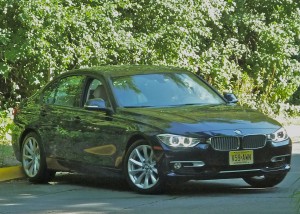
Less-expensive (slightly) and less potent (also slightly) 328i shares body and features with the 335i.
From the introductory tests, it seemed to me that the turbocharged 4 had sufficient power to eliminate any need for the more powerful BMW 335i, and it must be more economical too, right?
Not long after that, the pair of BMW 3s turned my assumptions upside down, and back again.
First, we had the 335i, with the priceless BMW inline 6-cylinder engine, measuring 3.0 liters of displacement, with dual-overhead camshafts operating the 24 valves.
While “just” a 4-door sedan, the 335i has something of a menacing look, and the drivetrain remains its inner jewel. One of the world’s truly fine engines, the 3.0 has TwinPower turbo technology, high-pressure precision direct injection, Valvetronic valvetrain, and Double VANOS t variable valve timing on both intake and exhaust valves. The 3-Series can be had with any flavor of 3.0-liter engines. The test car is twin-turbocharged, boosting power up to 300 horsepower and 300 foot-pounds of torque, allowing it to zip around with power and class.
The sticker shock reads $42,400 for base price, with options pushing the final tag to $55,870. That’s a lot, but it seems more reasonable after you spend some time appreciating the basic car plus the added features.
Driving on metropolitan highways and streets, the 335i exudes a certain class that approaches hotter sports cars and is far above normally recognized sporty sedans. Handling is flawless, which is no surprise, and while the car is smaller than most midsizers and more like a compact, although rear seat room is certainly adequate.
Performance is smooth and precise, harnessed by the Sport Line’s adaptive suspension off the M3 design, and with the Sport automatic transmission, which has eight speeds. Drivers can control things with paddles mounted within thumb’s reach on the steering wheel. I only really pushed the car once, and that was coming easterly on I-610 north of Minneapolis, where taking the Duluth exit north requires a left exit, which winds onto an overpass before curving gradually to the right, then more sharply, before finally hooking in a decreasing-radius arc. It is not what traffic engineers could possibly have thought would be the safest alternative for normal cars, but it is squeezed into a tight bit of real estate and is pure pleasure in a great-handling car.
Knowing the curve well, and having the pleasure of nobody around me, fore or aft, I went into the last part of the turn where the sign advises 25 mpg; I had downshifted a couple times, but was still going more like 47 mph. The car was so planted that I accelerated hard the rest of the way around, and we sailed onto Interstate 35 smoothly. It was close to breathtaking.
You can cheat with that engine, using console controls to push a button to engage “sport,” or clicking another one to get “sport plus.” I would recommend sport plus only on perfectly smooth surfaces, or at a race track. But sport works just fine as a compromise to quicken and raise shift points and tighten the suspension. Read more


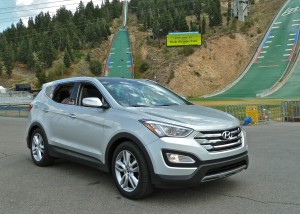
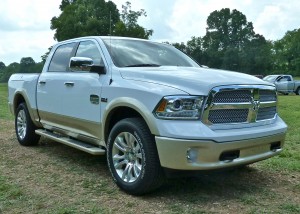
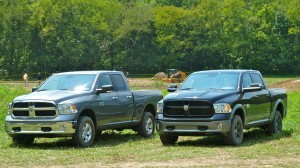
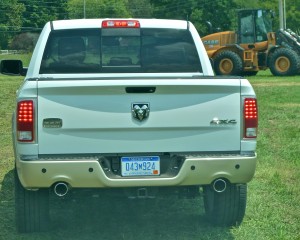
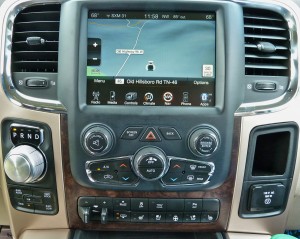
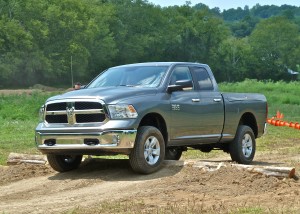
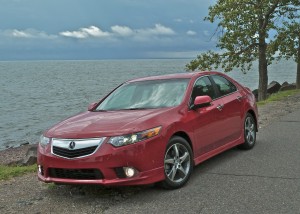
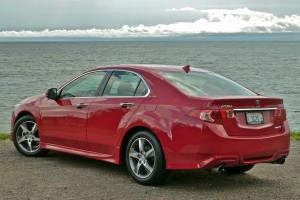
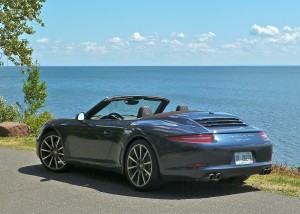
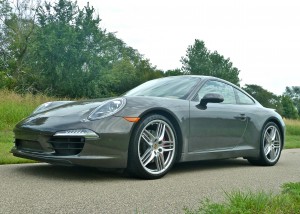
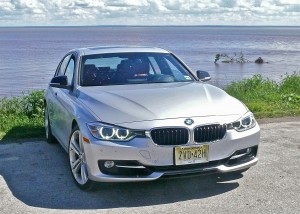
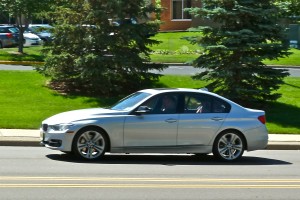
 John Gilbert is a lifetime Minnesotan and career journalist, specializing in cars and sports during and since spending 30 years at the Minneapolis Tribune, now the Star Tribune. More recently, he has continued translating the high-tech world of autos and sharing his passionate insights as a freelance writer/photographer/broadcaster. A member of the prestigious North American Car and Truck of the Year jury since 1993. John can be heard Monday-Friday from 9-11am on 610 KDAL(www.kdal610.com) on the "John Gilbert Show," and writes a column in the Duluth Reader.
John Gilbert is a lifetime Minnesotan and career journalist, specializing in cars and sports during and since spending 30 years at the Minneapolis Tribune, now the Star Tribune. More recently, he has continued translating the high-tech world of autos and sharing his passionate insights as a freelance writer/photographer/broadcaster. A member of the prestigious North American Car and Truck of the Year jury since 1993. John can be heard Monday-Friday from 9-11am on 610 KDAL(www.kdal610.com) on the "John Gilbert Show," and writes a column in the Duluth Reader.